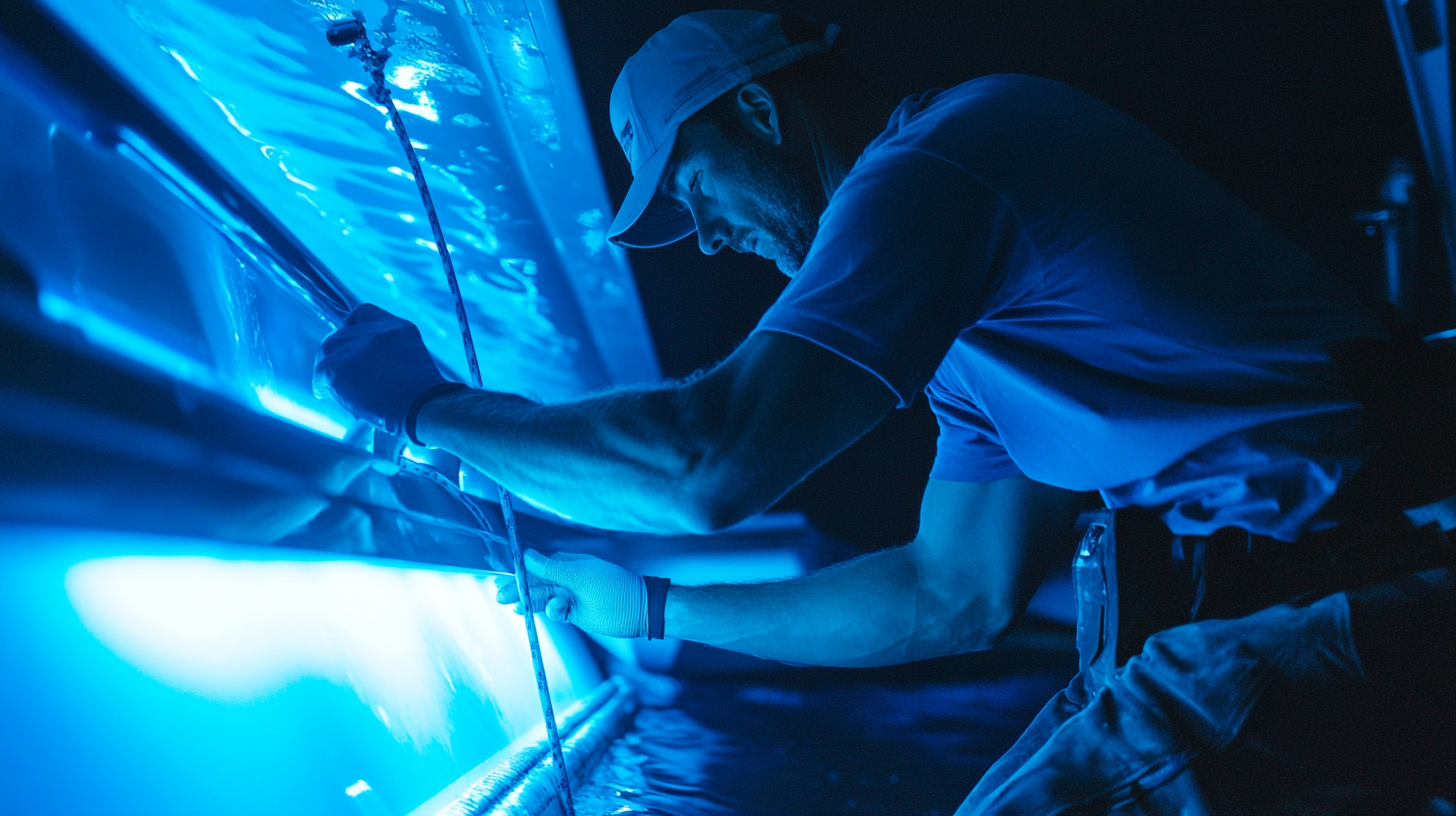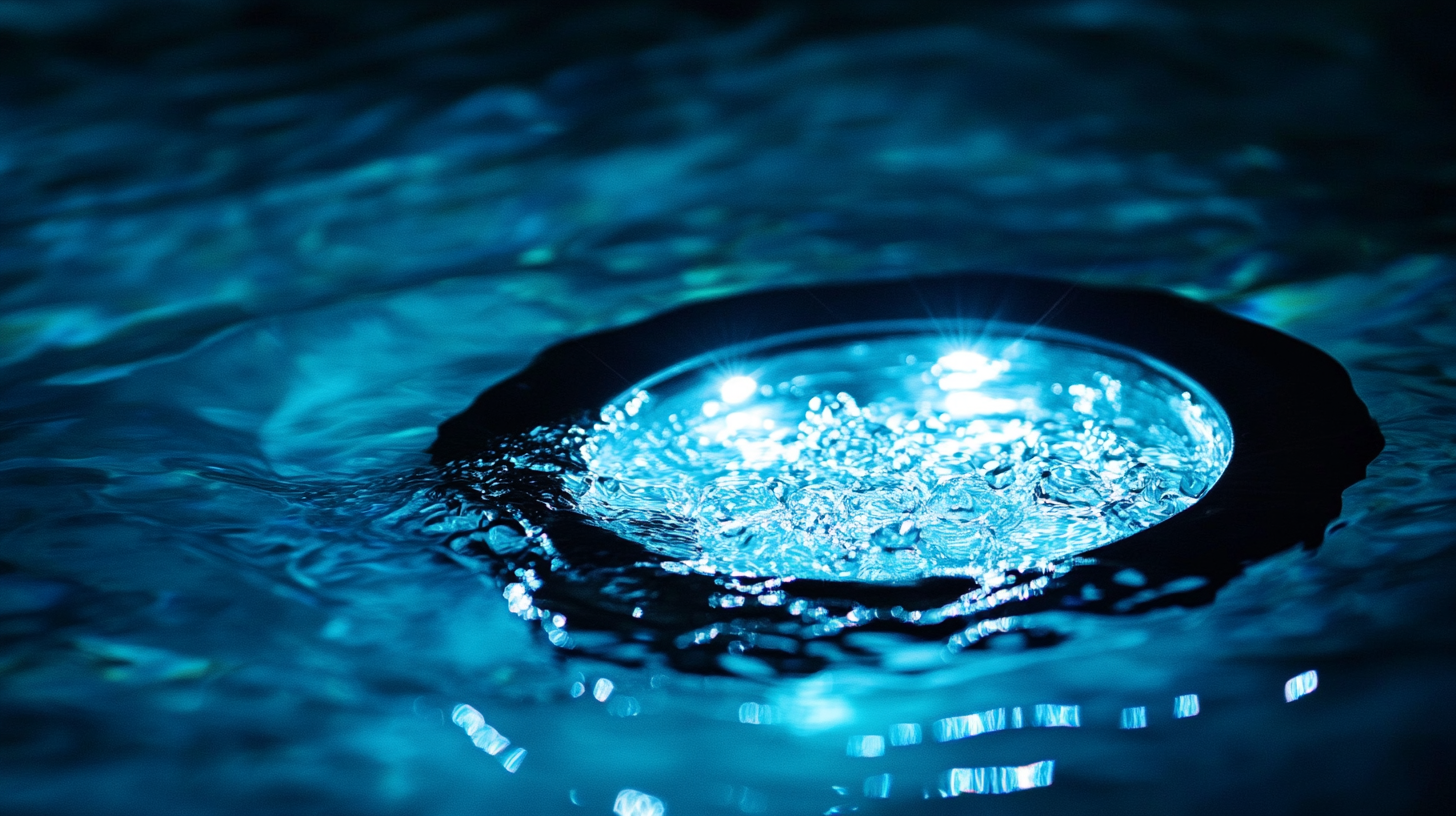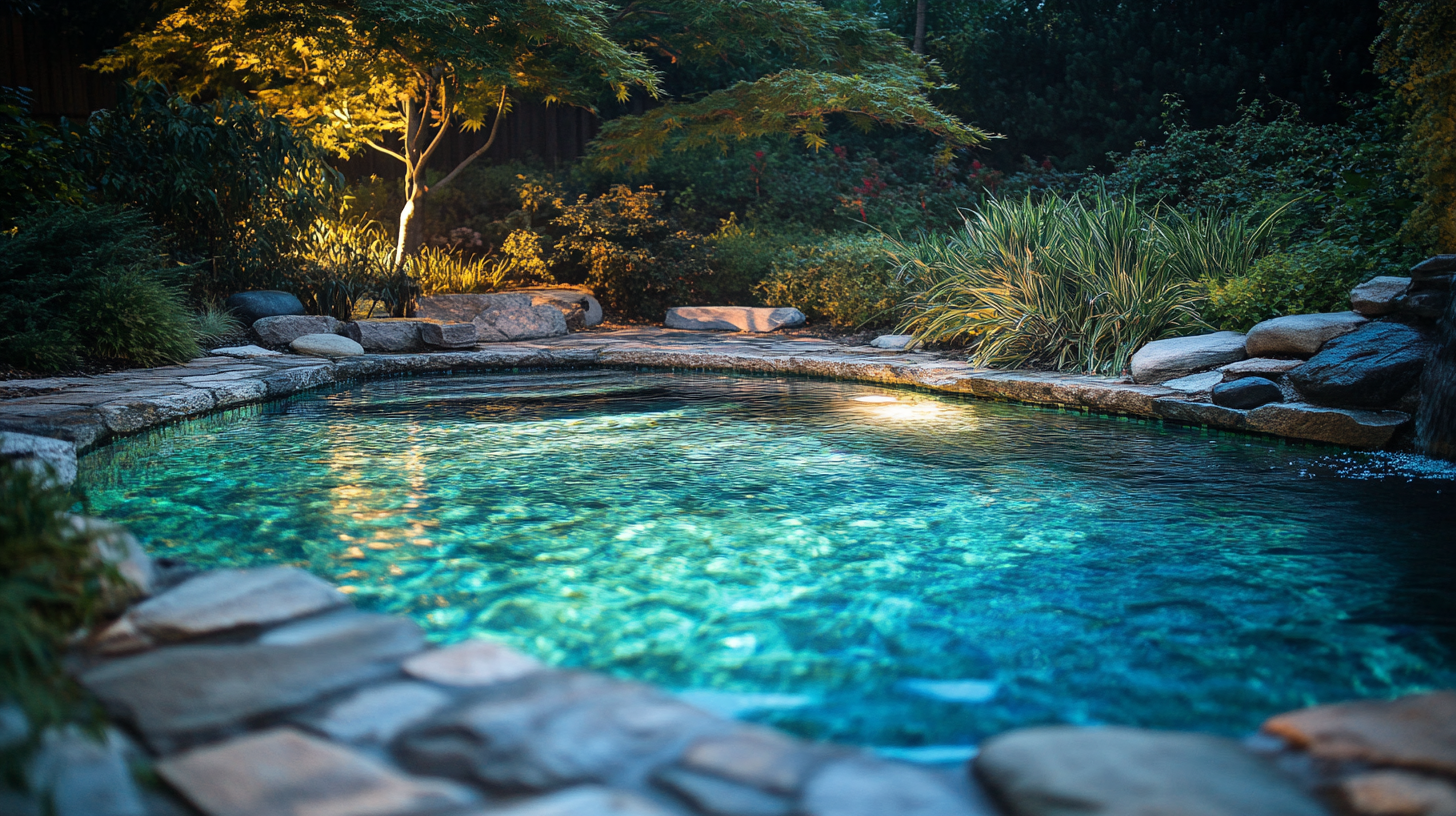How to avoid damaging your underwater boat lights
Proper installation is the foundation of a successful relationship with your underwater boat lights. Without it, even the most robust and high-quality lights can fall victim to premature failure and costly repairs. It’s crucial to consider how these lights integrate into your vessel to ensure not just functionality, but also longevity.
Imagine your underwater lights as the gems of the ocean, sparkling and enhancing your boat’s allure. However, if they’re positioned incorrectly or fixed with poor-quality brackets, you could be setting yourself up for a myriad of issues. Improper installation can lead to inefficient lighting, water leakage, and even corrosion, all of which are preventable with the right approach. In terms of damage prevention, paying attention to how your lights are installed can save a significant amount of stress and expense down the line.
First, consider the angle and depth at which the lights are installed. This will impact how effectively they illuminate the water and withstand the aquatic elements. Placing them too low could expose them to excessive water pressure, while too high might not give the desired lighting effect. Additionally, the type of materials used in gaskets and sealants can be pivotal. High-quality, marine-grade options are non-negotiable to fend off saltwater intrusion.
Also, when we talk about boat maintenance, proper installation segues seamlessly into this process. Correctly installed lights are easier to maintain because they’re readily accessible and less likely to suffer from wear and tear. Ensuring they’re securely mounted means they’re less prone to becoming dislodged while navigating through choppy waters or when docking.
Ultimately, following these safety tips and taking installation seriously isn’t just about avoiding immediate trouble. It’s about securing peace of mind, so your vessel remains as breathtaking in the water at night as it is safe and sound. Understanding the nuances of installation can transform your underwater illumination from merely functional to spectacularly dependable.
Choosing the right materials for protection
When it comes to safeguarding your underwater lights, selecting the right materials is like choosing armor for your sunken treasures. It’s not just about shining brightly; it’s about making sure that brilliance lasts. One of the most vital materials in your protective arsenal is marine-grade stainless steel or bronze. These metals are not just choices but commitments to longevity, offering robust resistance against the scrapes, knocks, and adverse elements that your lights will routinely encounter.
Consider the harsh, salt-laden environment your boat lights are exposed to day in and day out. Saltwater is notorious for its corrosive properties, and without the proper materials, your stunning lights could turn into tarnished artifacts. Stainless steel, especially versions like 316-grade, offers excellent corrosion resistance, making it a top pick among seasoned mariners and a must for damage prevention.
Equally important are the lens materials. Opt for highly durable polycarbonate lenses which are known for their toughness against impacts and resilience to ultraviolet rays. This means your lights can withstand not only the physical challenges but also the relentless gaze of the sun when surfaced. A savvy choice of lens material ensures that the illuminating prowess of your underwater lights doesn’t dim over time but rather holds steady, sparking joy every time you set sail.
Sealants and gaskets should also be on your radar when discussing pressure points for water intrusion defense. High-grade silicone or neoprene gaskets are not just trends—they’re the backbone of an effective barrier system that keeps the relentless advance of saltwater at bay. They ensure that even as you glide through varying sea conditions, your pivotal lighting components remain shielded from moisture, a common pitfall administrators underestimate.
Choosing the right materials isn’t merely about picking what looks best; it’s about a strategic approach to boat maintenance. It’s about layering your gems with a lasting safeguard, ensuring each nautical journey is accompanied by a reliable, breathtaking glow. Investing in these materials is not just opting for quality; it’s choosing peace of mind and unparalleled light show performance.
Regular cleaning and maintenance tips
Keeping your underwater lights in pristine condition requires more than just careful installation and using the right materials. Regular cleaning and maintenance play a crucial role in damage prevention and ensuring that these lights continue to illuminate with brilliance. A well-maintained light not only performs better but maintains its structural integrity against the harsh aquatic elements.
Start your maintenance ritual by inspecting your lights for any signs of fouling. This involves checking for algae buildup, barnacles, or salt encrustations. These unwelcome guests can dull the light’s glow and potentially cause overheating if left unaddressed. A gentle scrub using a non-abrasive brush and a mild, marine-safe cleaning solution will keep these nuisances at bay. Remember, the skin of your lights is delicate, so make sure you are buffing instead of scrubbing with brute force.
Next, take note of any tiny nicks or scratches on the lens surfaces, as these can escalate into more significant issues over time. Polycarbonate lenses, while durable, need tender care. If you spot any scratches, polishing in a circular motion with a suitable lens polish can restore clarity and luster. Regular lens checks ensure that your lights not only shine bright but also look brand new on every voyage.
The connecting wires are the lifelines of your underwater lights and deserve equal attention. Frequent saltwater exposure can lead to corrosion, so it’s wise to inspect the wiring routinely. Look for signs of fraying or corroded connections, and immediately address any compromised wires to prevent electrical failures. Applying a thin layer of dielectric grease on connectors can help fend off moisture and prolong their service life.
It’s also crucial to regularly test the operational efficiency of your underwater lights. Ensuring they power on without any flickering or dimming issues confirms they are not just surviving but thriving. If any irregularities arise, it might be a sign to delve deeper into the electrical system or consult a professional for maintenance advice.
For those aiming for comprehensive boat maintenance, committing to these regular checks not only ensures the longevity of your underwater lights but also enhances safety. These lights aren’t merely decorative; they are invaluable for nighttime navigation and securing a safer, more enjoyable boating experience. By dedicating time to consistent upkeep, your lights will serve as both a functional asset and an ever-stunning spectacle beneath the waves.
Avoiding common hazards and obstacles
Navigating the waters comes with its fair share of hazards that can easily compromise the integrity of your underwater lights if proper precautions are not taken. Vigilance in avoiding these common obstacles is essential to the longevity and effectiveness of your lighting system, providing not just illumination, but a beacon of safety in the marine environment.
One of the primary threats to underwater lights is physical impact with floating debris or submerged objects like rocks and coral. Navigators should be constantly aware of the water’s topography, especially in unfamiliar or shallow areas. Utilizing updated nautical charts and relying on depth finders can help reduce the risk of accidental collisions. Careful navigation and maintaining a safe cruising speed in areas known for potential obstructions are crucial safety tips that can prevent unnecessary damage.
Equally important is being aware of natural phenomena, such as strong currents or tidal shifts, that may lead to underwater lights being exposed to more force than they are designed to withstand. Choosing well-protected, low-traffic areas for mooring or anchoring can minimize direct exposure to these elements, ensuring your lights remain securely attached and functional. It is also wise to avoid anchoring near high-traffic zones where other vessels may inadvertently cause damage to your lighting system.
Furthermore, the marine environment is home to living organisms that, while beautiful, can attach themselves to your lights, causing blockage and overheating. Regular checks and cleanings, as previously mentioned, will help defend against such occurrences, but preventive measures should also include applying anti-fouling coatings, which help deter marine growth on your lighting fixtures. These coatings, developed as part of comprehensive damage prevention strategies, provide an additional layer of protection and maintain optimal light performance.
Lastly, human error, such as improper docking practices, needs to be stringently avoided. Neglecting to consider the positioning of your underwater lights when docking can lead to accidental dings and scratches which appear insignificant but may exacerbate wear over time. Always ensure your docking procedures are meticulous, and make use of docking aids like fenders to cushion potential impacts and safeguard your underwater installments.
Allocating time and attention to these preventive measures not only preserves the functionality and brilliance of your underwater lights but also integrates seamlessly into general boat maintenance routines. Through adept navigation, regular inspection, and strategic mooring, you reinforce both the safety and beauty of your vessel, illuminating not just the waters around you but also the path to wiser marine stewardship.
Storage and weather considerations
When it comes to safeguarding your underwater lights, paying attention to how and where your boat is stored plays a pivotal role in damage prevention. Storing your vessel correctly ensures that the lights, often delicate in their construction, remain in peak condition and ready for action. Strategic storage involves understanding not only the physical placement of the boat but also the environmental factors that can influence the longevity of your lighting fixtures.
For those in regions experiencing severe seasonal changes, it’s essential to store your boat in a manner that protects the underwater lights from the elements. If possible, overwinter your vessel in a dry, climate-controlled environment to prevent freezing temperatures from impacting the lights and their fixtures. Similarly, storing your boat away from direct sunlight can prevent sun damage and reduce wear on the lenses and seals. Covering your boat with a UV-resistant tarp can offer additional protection, ensuring the longevity of your underwater enhancement.
Moisture is another hidden enemy. Even in storage, high humidity levels can accelerate corrosion and affect the operational integrity of your underwater lights. Desiccants or marine-specific dehumidifiers can help manage the moisture levels during extended storage periods. Monitor the humidity, and aim for a stable environment to keep your lights in top shape.
Beyond weather, considering the location of storage in terms of safety is crucial. If you’re storing your boat in a communal marina or storage facility, ensure it is well-lit and secure to reduce the risk of theft or vandalism, which can damage your valuable equipment. Additionally, physically securing the lights with tamper-proof screws or protective covers can provide peace of mind against potential sabotage.
For those storing boats outdoors, remember that storms can bring both water and debris that can be damaging. Securing your vessel with strong, weather-resistant covers and making sure it’s appropriately tethered will help shield your underwater lights from unforeseen impacts. In regions prone to storms, it’s also worthwhile to periodically check the integrity of your covers and moorings.
Incorporating these storage and weather considerations into your routine boat maintenance involves not just preserving the aesthetic glow of your underwater lights, but also maintaining their functionality and safety. With a little foresight and preparation, you can avoid unnecessary repairs, ensuring your lights are as ready to dazzle beneath the waves as the day they were first installed.


